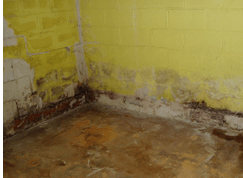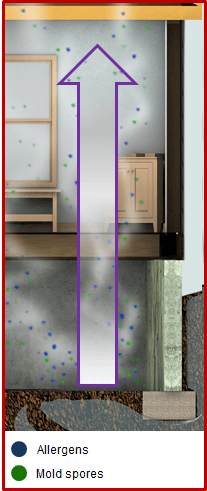
While bleach is the go-to cleaner for disinfecting surfaces, it releases fumes that can cause all kinds of unpleasant symptoms, such as headaches, sinus irritation and a burning sensation in the lungs. It’s best to start off using a gentler cleaner and use bleach only if other options dont work.
A mixture of borax detergent, water and vinegar should take care of light basement mold. Mix these items together, using approximately one-fourth cup vinegar for every two cups of borax and water, and allow the borax to dissolve. Wearing rubber gloves and a respirator or dust mask, spray the solution on mold and allow it to sit. You may need to apply it several times, scrubbing it to break down the mold.
The EPA is home to informative mold removal tips that can help make the job less of a headache.
Solutions for bigger problems

Once you have mold, you cannot avoid it
Due to the phenomenon known as the “stack effect” a large amount of the air you breath inside your home comes directly from the basement or crawl space. As cool, damp air rises from the lower levels of the home and is circulated up and out. This air can carry harmful mold spores and allergens, like dust mites. Insects and rodents are also attracted to conditions where mold thrives. Simply shutting your basement door and ignoring the problem wont improve the air quality issues that can affect the living areas of your home.
Remove moisture, prevent mold
You can remove mold from every inch of your basement or crawl space, but unless you take steps to reduce or eliminate moisture, those spores will eventually return.
If you have a partial basement – meaning one section of your basement is more like a crawl space – cover the soil in that part of the basement with thick plastic sheeting to reduce humidity from soil moisture (Olshan offers a moisture resistant liner). Use a dehumidifier or other type of air exchange solution, and remember to empty it regularly. Patch any fine cracks in walls to keep water from seeping in; if you have any large cracks in the walls or gaps between cinder blocks, your foundation may need to be repaired before you’ll notice a decrease in basement/crawl space humidity.
In the proper environment, mold will continue to grow, so it’s important to create dry conditions in your basement or crawl space that don’t appeal to mold spores.


Leave a comment: